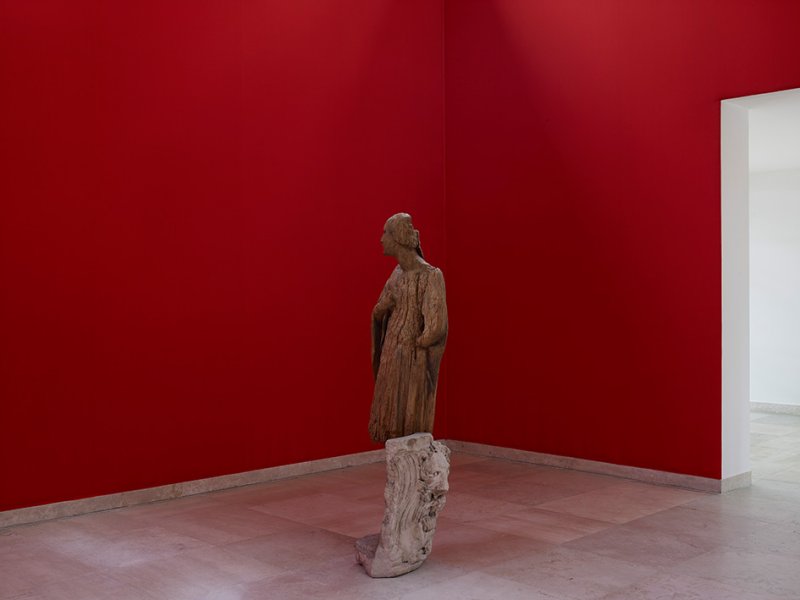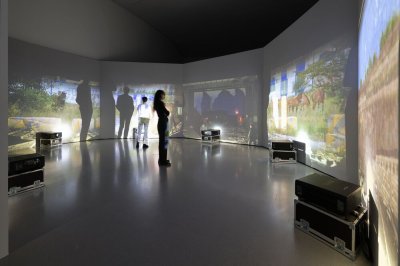Ο Θεός μαύρο
Greek marble sarcophagus, Roman, late 2nd century CE; poplar Virgin of the Annunciation, ltaly, ca. 1350; and cochineal dyed silk.
Artwork: 177,5 x 57 x 52 cm, 100 kg
Element (Marble base): 66,5 x 48,43 x 43 cm
Element (Wooden top): 120 x 46 x 29 cm
Danh Vo draws on his personal experience as a Danish citizen of Vietnamese origin, and as the son of Catholic refugees, to develop the themes that underly his work. These include history and its temporality, geopolitical conflicts, Catholicism and the movement of people and objects, all of which form part of the identity that the artist sees as both multiple and malleable. As an object collector, he composes his works from pre-existing historical materials that he fragments and reassembles, producing a kind of temporal compression as well as a rewriting of history.
For the work Ο ΘΕΌΣ ΜΑΎΡΟ, the artist has brought together two sculpted objects of different origin and nature: the upper part of the work is composed of a poplar Virgin of the Annunciation from Italy dating from around 1350; the lower part of a Roman marble sarcophagus dating from the late 2nd century. Through this hybrid assemblage of materials combining history, cultural heritage and religion, the work evokes the double meaning of the act of possession – both in the demonic sense and in the colonial sense of appropriation.
Because it results from a gesture of dismemberment and profanation of the sacred, Danh Vo's statue is that of a possessed body, just like the young protagonist of the horror film The Exorcist (1973, directed by William Friedkin) possessed by the demon Pazuzu, a Mesopotamian deity from the 1st millennium BC. The title of the work Ο ΘΕΌΣ ΜΑΎΡΟ (“black god" in Greek) also makes it part of a series of works in which Danh Vo refers directly to the film's dialogue. Here, the artist's gesture of cutting up and assembling can also be seen as a critique of certain systems for acquiring objects that take the form of violent requisitions, in a world where the market in cultural goods sometimes echoes a form of geopolitical domination. The dismembered body is also that of the colonised subject who, in the spirit of Frantz Fanon, has lost all autonomy along with his limbs.
This work has been integrated into a larger installation - Tropeaolum - exhibited in the rotunda at the Bourse de Commerce - Paris between February and April 2023.
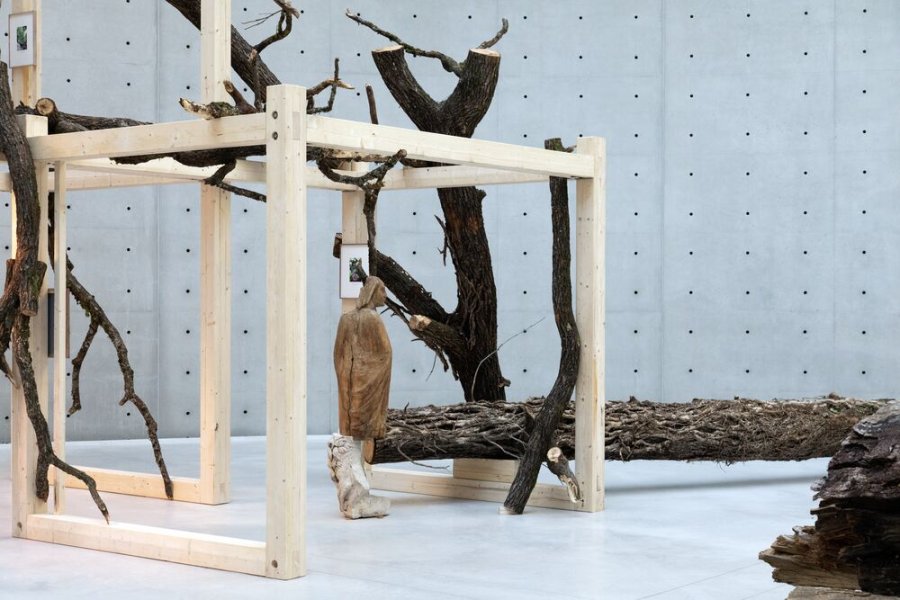
© Tadao Ando Architect & Associates, Niney et Marca Architectes, agence Pierre-Antoine Gatier. Photo : Heins Peter Knes. Courtesy Pinault Collection
Exhibition view "Avant l'orage", Bourse de Commerce - Pinault Collection, 2023
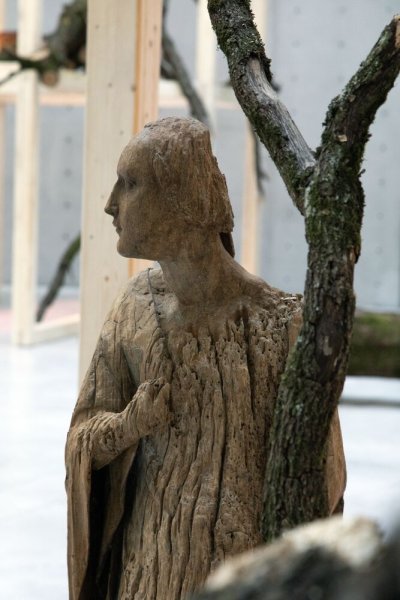
© Tadao Ando Architect & Associates, Niney et Marca Architectes, agence Pierre-Antoine Gatier. Photo : Heins Peter Knes. Courtesy Pinault Collection
Exhibition view "Avant l'orage", Bourse de Commerce - Pinault Collection, 2023
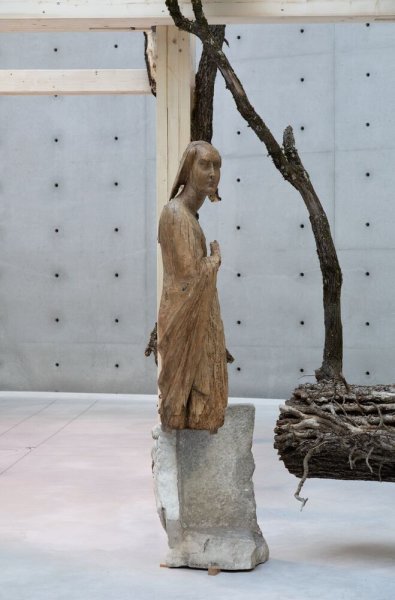
© Tadao Ando Architect & Associates, Niney et Marca Architectes, agence Pierre-Antoine Gatier. Photo : Heins Peter Knes. Courtesy Pinault Collection
Exhibition view "Avant l'orage", Bourse de Commerce - Pinault Collection, 2023
